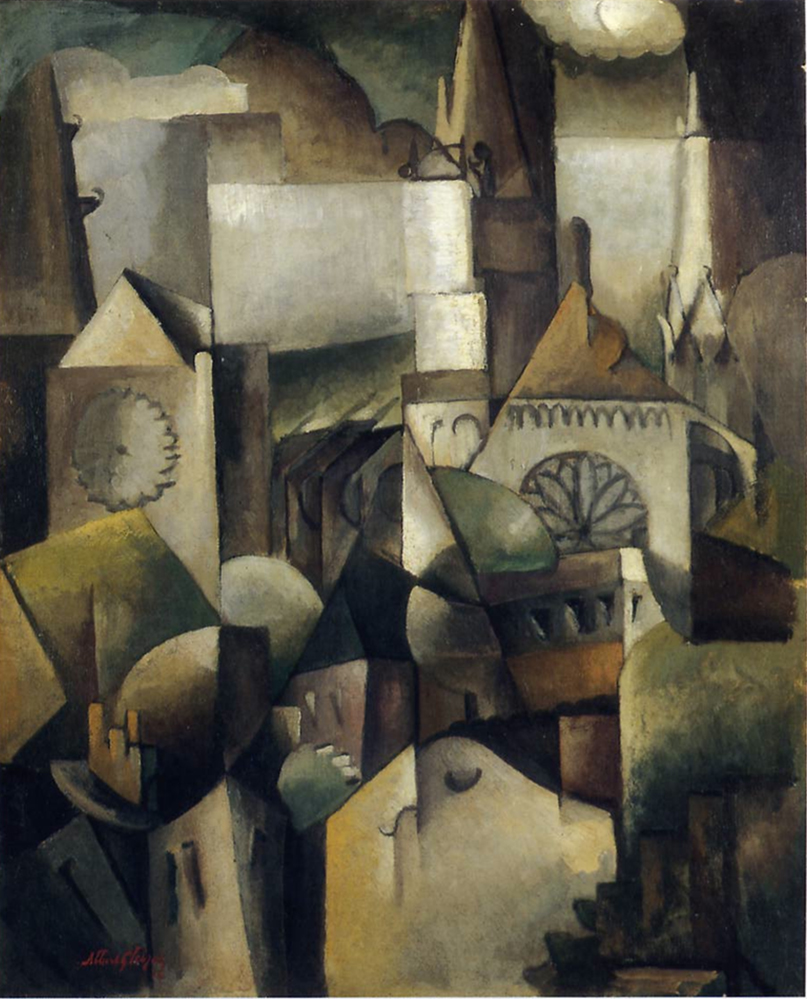Medieval/Modern Mindsets: Cubism, the Gothic, and the Invisible Worlds of Science and the Fourth Dimension
Alexandra Mills
Advisor: Dr. Linda Henderson

Abstract
In this thesis I have examined the impact of the medieval church and the European interest in the Gothic in the nineteenth and twentieth centuries on the development of Salon Cubism, particularly that of Albert Gleizes. By comparing medieval theology and the study of geometry, and the resulting links of art to the theology, as well as the artistic theory of the late nineteenth and early twentieth centuries and its connections to new science and the popularization of the spatial fourth dimension, we can see a similarity in the worldviews that broadens the conversation between the two time periods. Wilhelm Worringer’s 1907 book Abstraction and Empathy provides a basis from which to understand the abstraction of the Gothic as a result of the era’s dualistic view of the phenomenal world through the lens of modern Christianity. With a similar approach to the modern interest in the invisible rooted in contemporary science and the popular fourth dimension, as argued by Linda Henderson, we can see a similar result in the work of Gleizes and his fellow cubists. In addition to the parallel world views, through an examination of Gleizes’s biography and the life of his peers, the milieu of Gothic interest that impacted their lives becomes increasingly apparent. My thesis is grounded in a careful analysis of paintings exhibited yearly by artists, the writings of the Salon Cubists, particularly Gleizes, critics’ responses, and the scholarship on Cubism.